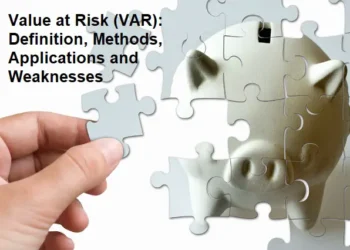What are Abnormal Returns?
Abnormal Return is a return on investment that exceeds the expected return. In stock investing, this can happen when price movements become stronger due to events that affect the company’s fundamentals, such as mergers or acquisitions. Meanwhile, on the one hand, significant price movements are influenced by the conditions of the company itself, such as company size, company growth and company risk.
Firm size is usually inversely related to the potential for abnormal returns. This means that the bigger a company, the lower the chance for abnormal returns to occur. But, for the company’s growth and risk, it is usually directly proportional to the abnormal return. So that the higher the growth rate or company risk, the greater the opportunity for abnormal returns to occur.
The size of the company, which is determined by the total assets owned by the company, will affect the size of trading volume on the stock market. The larger the company, the greater the volume of transactions in the market. So it is difficult to make the company’s stock price move significantly.
Meanwhile, growth is shown by the growth rate of profit, sales growth and book value. A high growth rate will normally attract the interest of most investors, so that the demand for company shares increases significantly. And these conditions make the movement of the company’s stock price greater than usual.
Meanwhile, risk is shown through the distribution of equity and company debt. The higher the level of risk, the more investors will sell their shares and cause a significant increase in the supply. Under these conditions, stock prices will weaken and generate lower returns than expected.
How to Calculate Abnormal Return
Abnormal returns can be identified through several methods, such as historical average returns and the capital asset pricing model (CAPM).
The average taking history is the average return generated in several past periods. This return is based on the development of the JCI, not the shares being counted.
For example, in the past 10 years, the average return on the JCI has been 10%. But an investor actually gets a return of 20%. Then the investor is an abnormal return, because it exceeds the expected return based on historical averages.
The Capital Asset Pricing Model (CAPM) is a method to find out the expected profit (expected pricing). The difference between this CAPM and the actual return will result in an abnormal return. In addition to returns, CPAM is also a useful model for assessing investment risk in the capital market.
To calculate CPAM, the following formula is used:
RA = Rrf + (B x (Rm – RF))
RA = Expected return
Rrf = Risk free rate
Ba = Stock Beta Value
Rm = Estimated market return
Types of Abnormal Returns
types of abnormal returns can be classified into four groups, namely:
1) Abnormal Returns (AR)
Abnormal returns occur in each type of stock, such as the difference between the actual return and the expected return, which is calculated daily. By calculating it per day, in a window period it can be seen the highest or lowest abnormal return and it can also be known on which day the strongest reaction occurs for each type of stock. Information leaks that result in abnormal returns that appear in the period before an event occurs will appear in the abnormal return graph for each type of stock.
2. Average Abnormal Return (AAR)
Average abnormal return is the average of the abnormal returns of all types of stocks that are being analyzed on a daily basis. So there is AAR day-1, AAR day-2. etc. AAR is able to show very strong reactions, both positively and negatively, from all types of stocks on certain days during the window period.
3. Cumulative Abnormal Return (CAR)
Cumulative Abnormal Return is the cumulative daily abnormal return from the first day to the following days for each type of stock. The cumulative abnormal return for the period before an event occurs will be compared with the cumulative abnormal return during the period after the event occurs. By doing this comparison, we can find out the types of stocks that have the most positive or negative effect during a period.
4. Cummulative Average Abnormal Return (CAAR)
Cumulative abnormal return is the cumulative daily average abnormal return from the first day to the following days. From this graph of the average daily abnormal return it can be seen that the trend of increase or decrease that occurred during the window period, so that the positive or negative impact of this event on all types of stocks studied can also be known.
Reasons Why Abnormal Return Occurs
Abnormal returns usually occur around the announcement of an event. Such events include mergers or acquisitions in which dividends are announced, productive company announcements, lawsuits, and interest rate increases and so on. This phenomenon also occurs quite frequently at IDX market closing (market on close), and is also the result of a significant increase in trading activity. This is not only happening to the IDX but also the NYSE. Apart from the increase in trading activity, there are also indications of order imbalance which has the potential to cause stronger price movements. All activities in the financial sector can be interpreted as information or events that can affect previous or subsequent prices on financial markets. Other research can also show that company-specific factors can also explain or influence the magnitude of the abnormal return that occurs.
Some of these variables, among others
* Company size or SIZE determined from total assets or net sales and equity value.
* GROWTH company growth which can be seen from profit growth, sales growth and market value divided by book value.
* The company’s risk is RISK leverage, namely the total of equity divided by total debt
Conclusion
So, abnormal return is the difference between the actual return obtained and the expected return. A positive abnormal return is certainly an advantage for investors. But a negative abnormal return does not mean that investors are losing, but it could also be because the performance of the assets or stocks owned is indeed not good.









